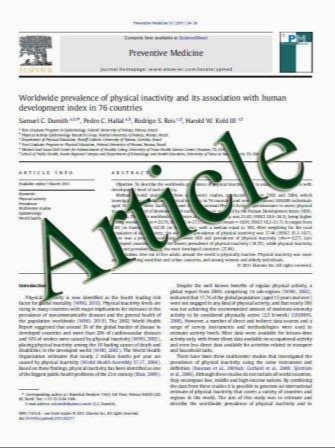Effect of recombinant streptokinase on the development of chronic cerebral vasospasm after subarachnoid hemorrhage in a swine model
- نوع فایل : کتاب
- زبان : انگلیسی
- مؤلف : Hongzhi Xu , Xiancheng Chen , Zhiyong Qin , Yuxiang Gu , Ping Zhou
- چاپ و سال / کشور: 2011
Description
Background After subarachnoid hemorrhage (SAH), the formation of subarachnoid clots and their associated resolution may be involved in the development of chronic cerebral vasospasm. To dissolve and wash out the subarachnoid clot is one of the therapeutic strategies for prevention of cerebral vasospasm. Objective We investigated the effect of recombinant streptokinase (r-SK), a synthetic plasminogen activator, which is added to degenerate oxyhemoglobin, one of the strongest spasmogenic substances. The efficacy and safety of this therapy concerning the development of chronic cerebral vasospasm were evaluated in a swine model. Methods Eighteen healthy porcine subjects were used. Each was randomly assigned to one of three groups: saline control (A), SAH treated with saline (B), and r-SK injection into the cisterna magna (C). SAH was produced by introduction of blood clots into the cisterna magna on each of 2 days in all subjects in groups B and C. At 24-h post- SAH, a one-time dosage of 15 mg of r-SK was administered to those subjects randomized to group C. Continuous drainage was applied in all three groups. Vessel diameter was evaluated by angiography before the induction of SAH and at day 7 following SAH. Results The pre- and post-SAH angiographs of subjects in group A determined no significant difference in mean vessel caliber. In group B, pre- and post-SAH angiography indicated significant (p<0.05) reductions of the mean vessel caliber of the right internal carotid artery (ICA) and basilar artery (BA) compared with the baseline values before SAH. In the r-SK treated group, the mean percent reduction in vessel caliber of the right ICA and BA on day 7 angiograms showed no significant difference compared with the baseline value before SAH. Conclusions Chronic cerebral vasospasm was inhibited in the animals to whom r-SK was administered for 1 day after double administration of blood clots to the cisterna magna to induce SAH. The results suggest that the post-SAH presence of subarachnoid clots that contain oxyhemoglobin might be involved in the pathogenesis of vasospasm. Further degeneration of these clots by r-SK may have a promising effect for prevention of vasospasm.
Acta Neurochir (2011) 153:1333–1338 DOI 10.1007/s00701-011-0954-0 Received: 15 September 2010 / Accepted: 19 January 2011 / Published online: 11 February 2011 # Springer-Verlag 2011


